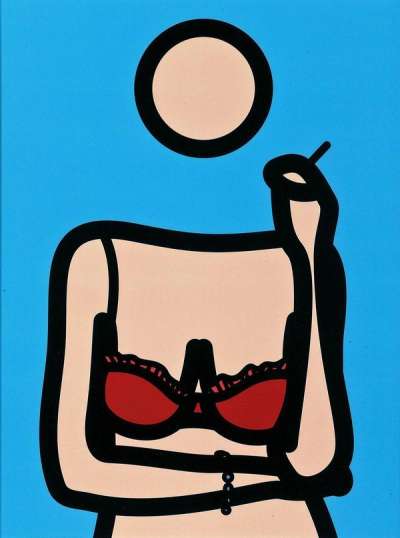
Ruth Smoking 1

Ruth Smoking 1
Signed Print
Julian Opie
Price data unavailable
AAGR (5 years) This estimate blends recent public auction records with our own private sale data and network demand.
There aren't enough data points on this work for a comprehensive result. Please speak to a specialist by making an enquiry.
Medium: Screenprint
Edition size: 50
Year: 2006
Size: H 120cm x W 84cm
Signed: Yes
Format: Signed Print
TradingFloor
Track this artwork in realtime
Watch artwork, manage valuations, track your portfolio and return against your collection
Track auction value trend
Auction Results
| Auction Date | Auction House | Location | Hammer Price | Return to Seller | Buyer Paid |
|---|---|---|---|---|---|
| April 2021 | Bonhams Knightsbridge | United Kingdom | |||
| April 2015 | Phillips New York | United States | |||
| October 2010 | Bonhams Knightsbridge | United Kingdom | |||
| September 2010 | Sotheby's Online | United Kingdom | |||
| March 2010 | Bonhams New Bond Street | United Kingdom |
Meaning & Analysis
Ruth Smoking 1 is the first in a series of portraits of the subject, Ruth, smoking, by Julian Opie from 2006. The print is a three-quarter length portrait of a woman who looks out to the viewer, cigarette in hand and her shirt open to show her underwear. Rendered in Opie’s graphic style, characteristic of his work during the mid-2000s, the figure is contoured with thick, bold lines and her features are defined by a few marks.
Opie’s portraits engage with longstanding ideas that have characterised this art historical genre by questioning what intrinsic elements are needed to convey a person’s character. Ruth Smoking 1 presents the viewer with the absolute minimum by which the subject can be recognised, with buttons for eyes, two lines for a mouth, and the image created with flat, block colours.
Ruth Smoking 1 is representative of Opie’s strong interest in Ukiyo-e, a genre of Japanese woodblock prints from the 18th and 19th centuries that often depicted female beauties not meant for exhibition. Opie’s particular interest in Ukiyo-e artist Kitagawa Utamaro comes through in these portraits of Ruth, notably explaining that, "[Utamaro’s] models were radically cropped close up, the faces were very simply drawn, in some ways always very similar, but with great presence and individuality."







